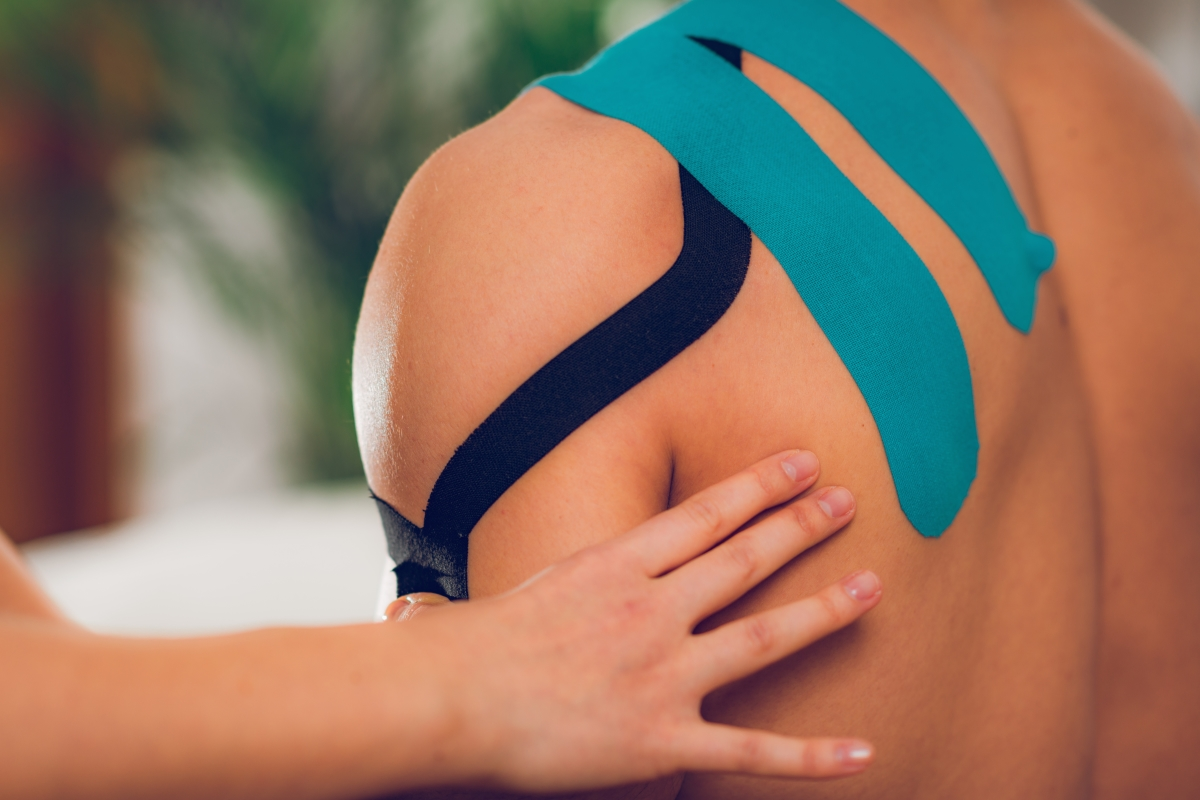Kinesio Tape: Help or Hype?

Have you ever been curious about the potential benefits k-tape might have for you? We’re here to help you understand the hype!
Decades of Success
In 1979, Dr. Kenzo Kase developed the first Kinesio tape. A tape that was not stiff did not restrict movement and caused no infections. Kinesiology Tape is everything that ordinary medical tape was not.
It was flexible enough to allow movement but also firm enough to increase the sense of proprioception. This helped reduce the chances of patients indulging in back-breaking postures.
It was everything Dr. Kase wanted, plus the bonus of reducing musculoskeletal pain.
It can still do the same good work for you today!
Proven Purpose
K-tape has proven useful in the prevention and repair of a variety of ailments around the world for the last 40 years.
Athletes have long been aware of the benefits and you may have come across the concept in such a setting, but it is valuable for anyone with muscles and bones!
Waterproof Kinesio Tape is a wonderful thing to add to your first aid kit or medicine cabinet for accidents around the house or out on the road. A twisted ankle doesn’t have to hurt for so many days!
Our Kinesiology Tape
- Hampton Adam’s 16ft Kinesiology tape is insanely flexible, comfortable, and 100% cotton!
- It is natural, hypoallergenic, and bioderadeable!
- Skin-mimicking adhesive and texture make keep this tape from being too distracting or irritating to those sensitive to foreign objects.
- Hampton Adams is water-resistant, but make sure you get some good adhesion before you shower!
- Our tape is strong and will support you through your daily activities and exertions!
- To show how strongly we stand behind this claim, there is a 60-day money-back guarantee on our tape.
Contemporary Applications
Sometimes, athletes wear these tapes as a preventive measure, and other times, they are there to aid recovery as we’ve discussed.
K-tape creates a unique kind of lift in the skin that creates space for your muscled to manage inflammation better.
When you injure a part of your body, you rub it, sometimes due to instinct; this increases pressure.
Even without this reflex rub, there is a lot of pressure between the skin, bone, and muscle.
When the tape raises your skin, it causes a decompression which is a reduction of pressure.
This alters the signal that the brain receives, and it no longer gets pain signals from the receptors on the affected body parts.
This lift is what helps to reduce musculoskeletal pain.
Kinesio tape also helps to stabilize bones and joints. This stabilizing property helps to prevent injury; it can do things like reducing the chances of your femur and tibia going opposite ways.
If you have broken or dislocated a certain joint, adding k-tape as a form of physical therapy will help increase your awareness of the injury and serves as a reminder to move that part of your body cautiously.
Who is it for?
Of course, athletes are not the only people that get injured, experience musculoskeletal pain, have incurable conditions, or have problems with their posture. Other people that Kinesio tape can be a big help to include:
- People who do jobs that require a lot of manual labor or just take a toll on their bodies. It will help reduce musculoskeletal pain.
- People who live sedentary lifestyles are not exempt from this list as they tend to have a lot of postural issues. Kinesio tape will help increase their sense of proprioception and, ultimately, their posture.
- This set of people does not belong in any group, and it’s just people with injuries or conditions that cause pain.
Relief and Recovery
- Before beginning to apply k-tape yourself, consult your physician. This will help you know your condition if you need Kinesio tape, and if so, how you should apply it, which size and shape are appropriate, how long you need to keep it on, etc.
- Once you have that figured out, it is advisable to try on a test strip. This is to have an idea of how your body may react to the tape. You can just do this for a small part of your body.
- Following a successful patch test, remove any hair from the desired area, wash it, and dry thoroughly.
- Next, cut the appropriate pieces of tape and apply them following the instructions of your physician.
There is so much research and information available online about K-Tape if you are interested in learning more!
If you feel confident that this is the right move for your health, check out Hampton Adams!





